Renault introduces long Kangoo variant
With the Grand Kangoo, Renault presented the long version of the Kangoo at the IAA Mobility – as a combustion engine and also as the fully electric Grand Kangoo E-Tech Electric with up to seven seats. Orders are to be possible from the end of 2023 and deliveries are to start in early 2024.
The drive of the new Grand Kangoo E-Tech Electric is familiar from the electric Kangoo van and its passenger car variant (Kangoo Rapid E-Tech Electric and Kangoo E-Tech Electric): A separately excited synchronous motor with 90 kW of power and 245 Nm of peak torque is combined with a 45 kWh battery, which is said to provide a WLTP range of up to 265 kilometres in the Grand Kangoo E-Tech Electric. An AC on-board charger with 22 kW output comes as standard, while DC charging is optional with up to 80 kW. AC charging from 15 to 80 per cent battery charge takes 2:40 hours, according to Renault. With DC charging, Renault states that energy for a distance of 80 kilometres can be refuelled in ten minutes and electricity for a distance of 170 kilometres in 27 minutes.
As with the other electric Kangoo variants, the battery in the seven-seater is liquid-cooled in combination with the optional quick charger. The model also has a 2-zone automatic climate control system with a heat pump on board. Various driving modes and a choice of three recuperation levels are also standard. All this is familiar.
The difference Renault emphasises is of course the spaciousness, although curiously Renault does not mention the exterior dimensions of the new model in its announcement. We will provide this information as soon as we receive a reply to our enquiry. Instead, the French emphasise that the long-wheelbase version can accommodate up to seven adults in three rows of seats, and that the third-row knee room of 16.4 centimetres is a “class-leading value”. The seats in rows two and three can also be individually moved, folded, reclined and removed, allowing a number of seating configurations. For example, the centre seat in the second row can be extended to provide six generous seats.
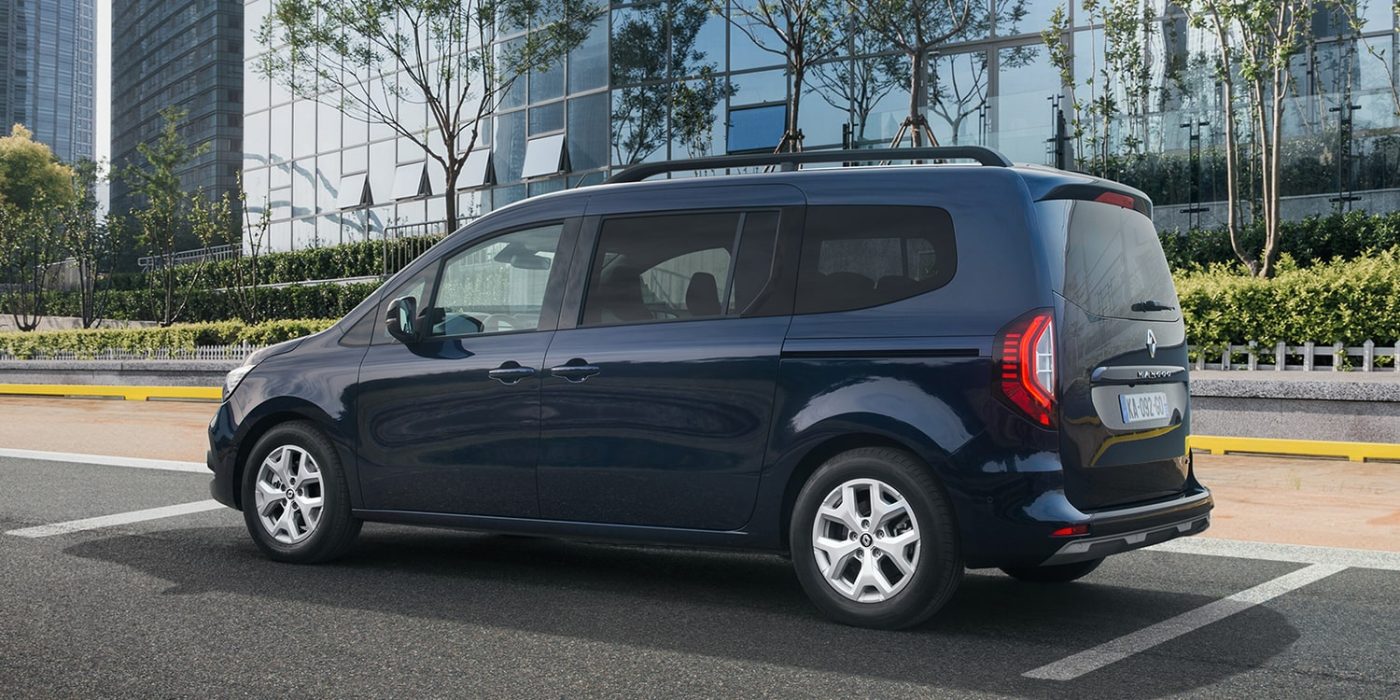
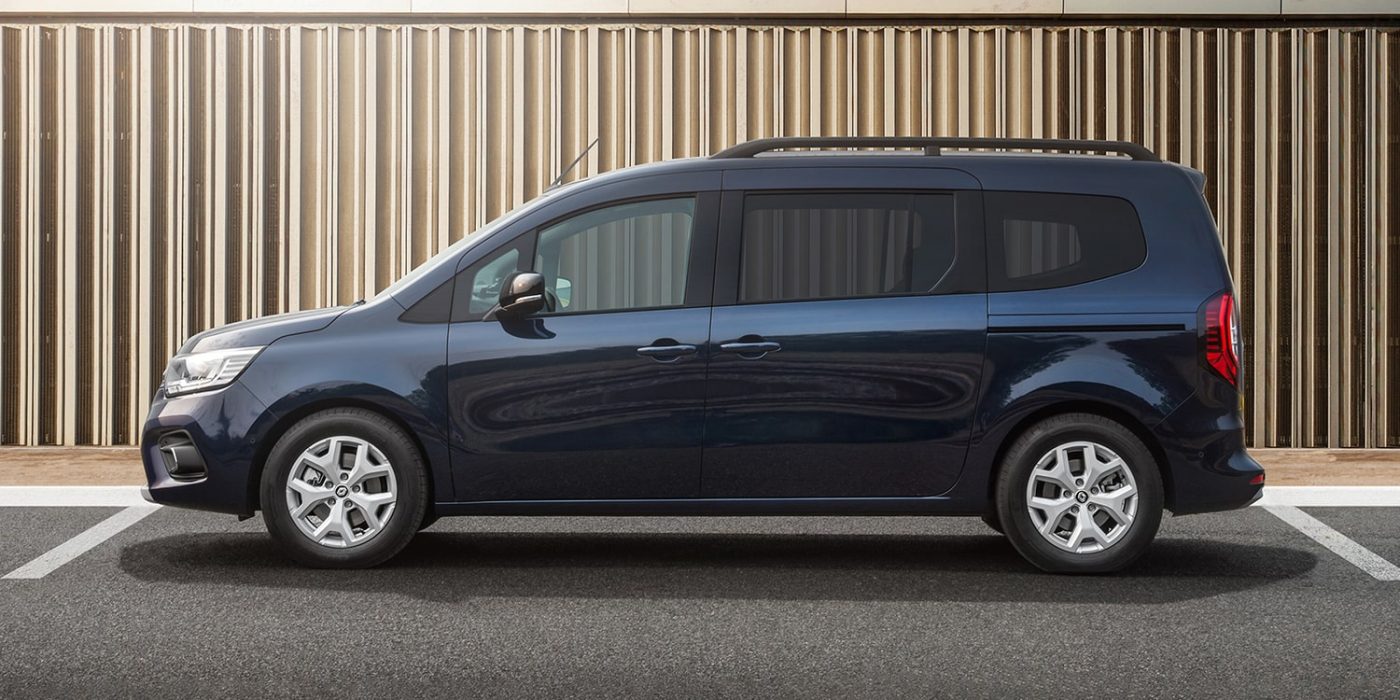
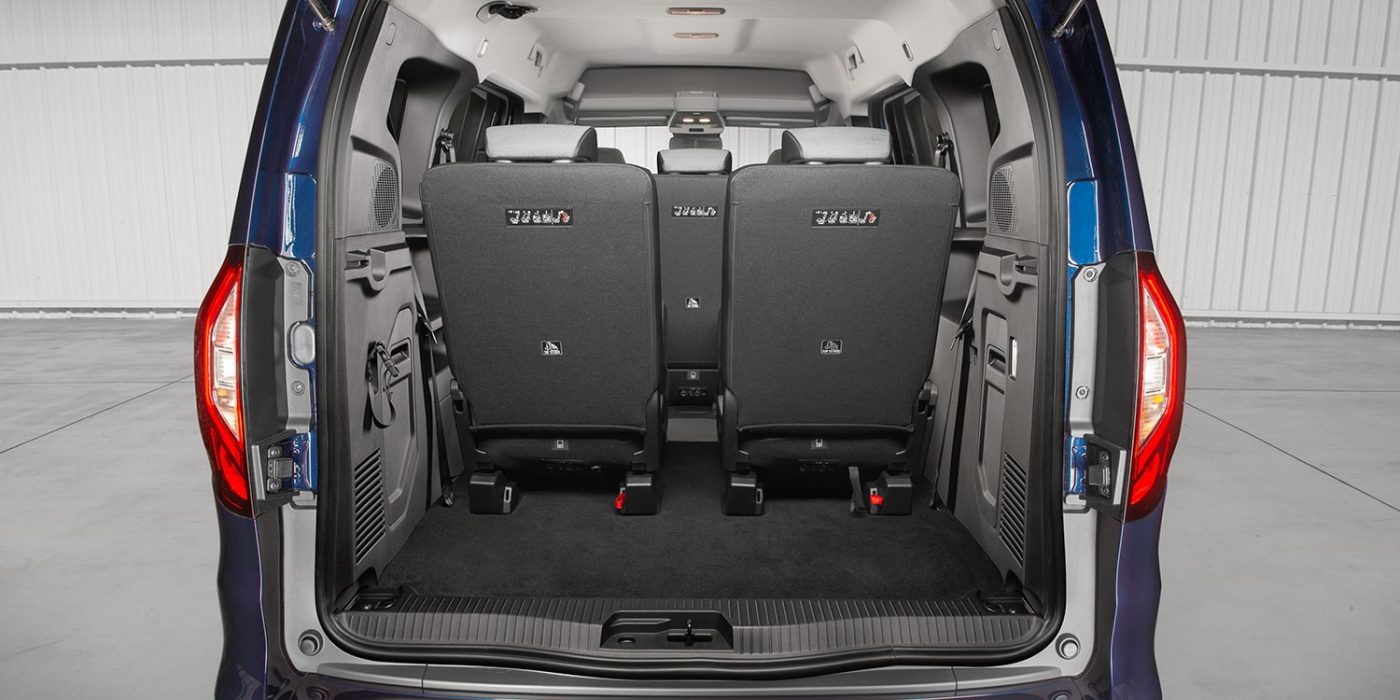
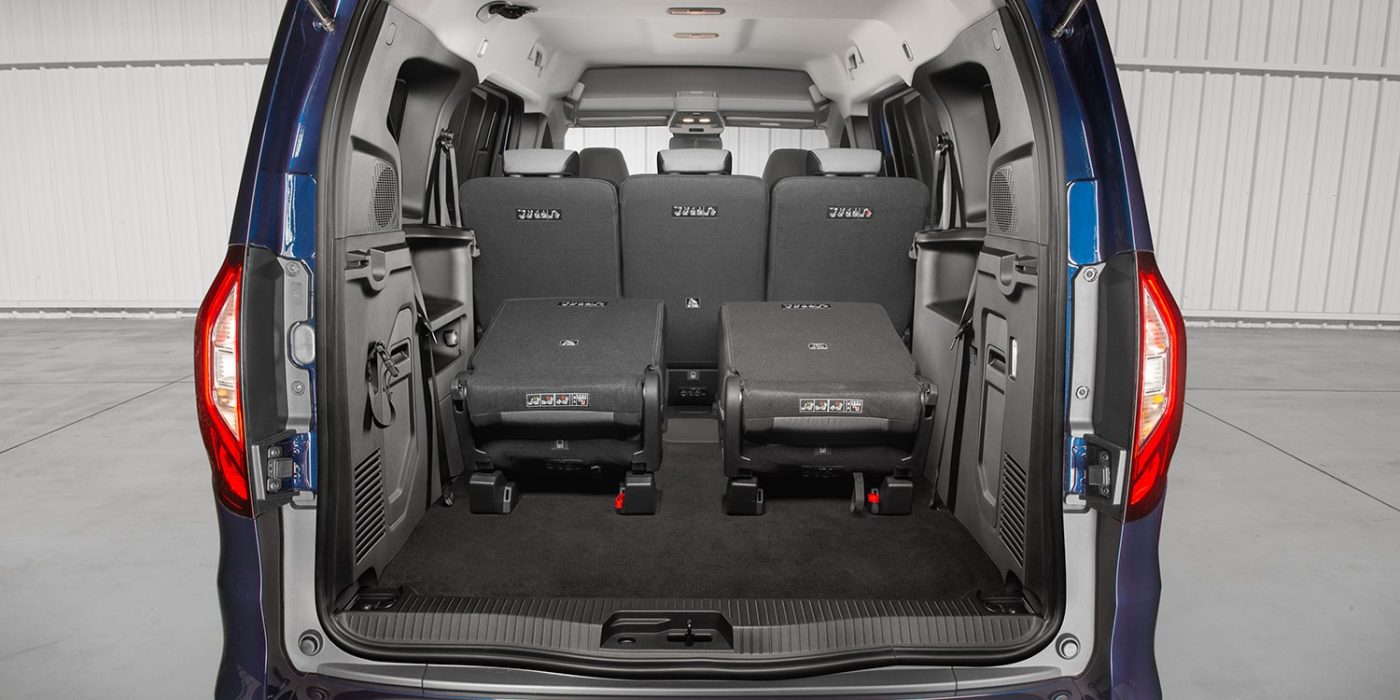
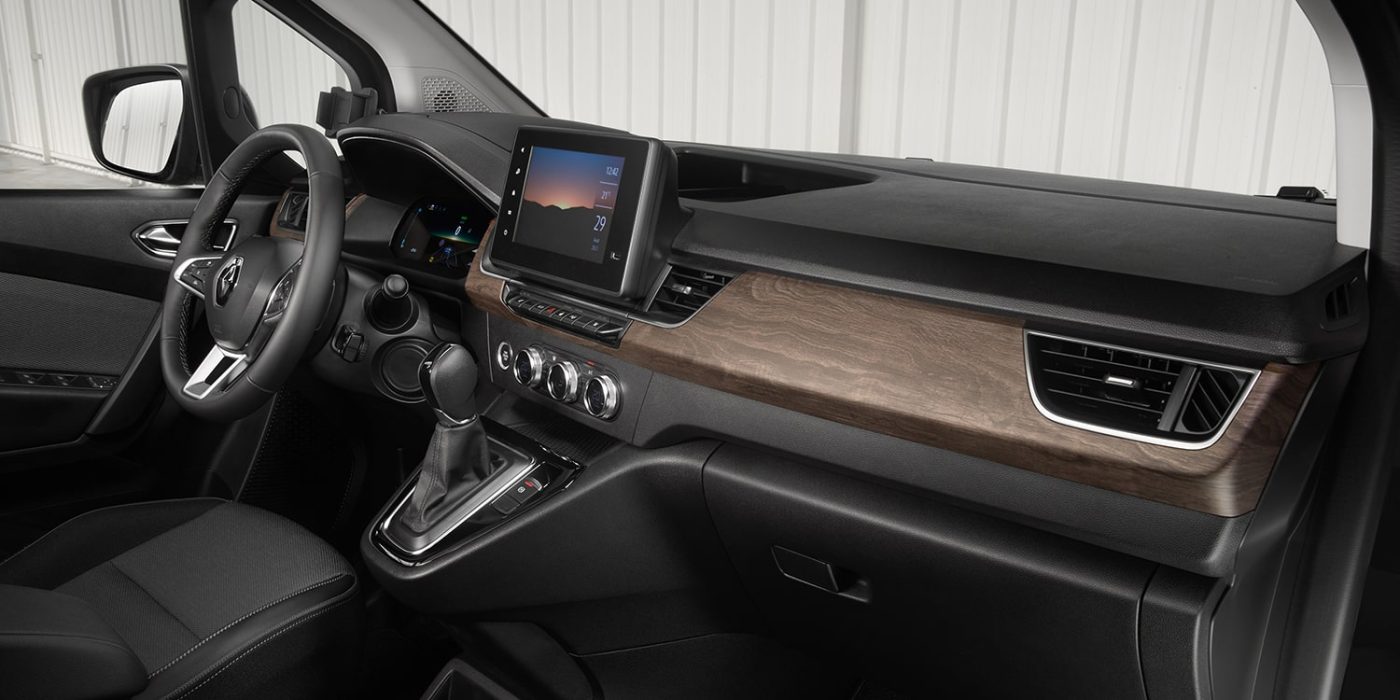
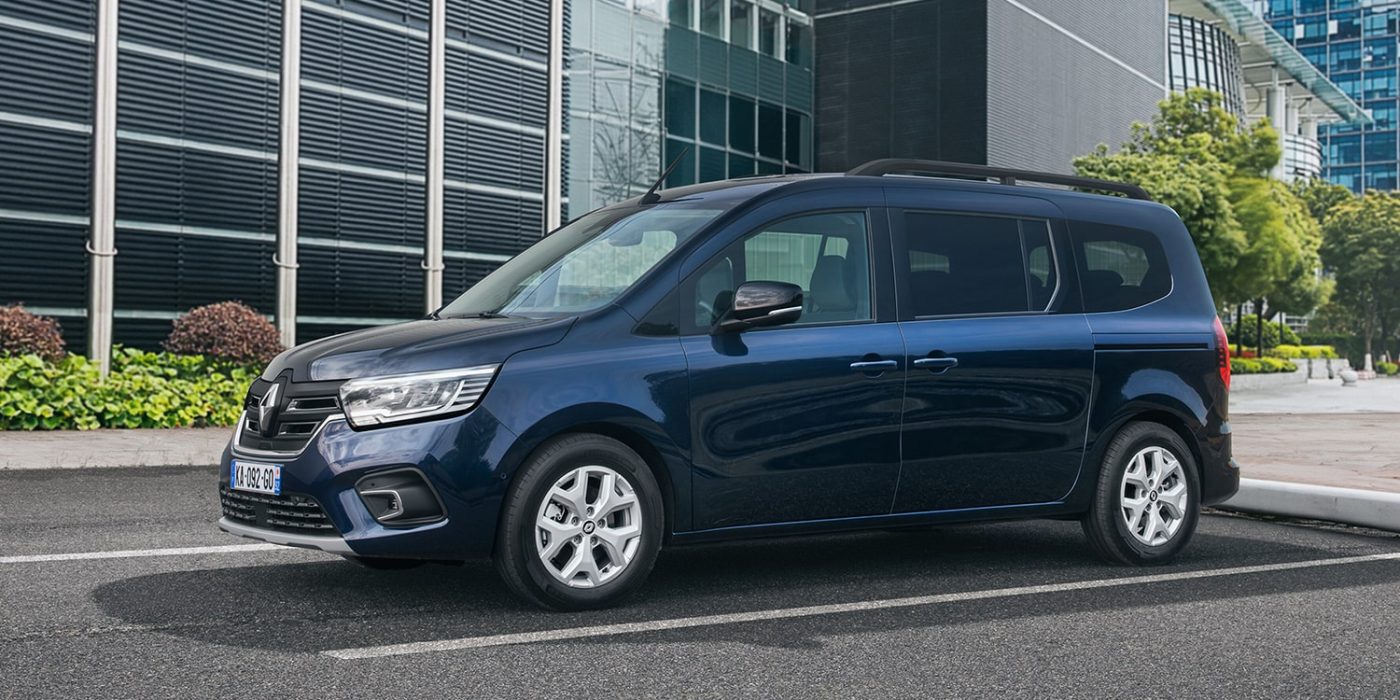
Renault estimates the load volume at 500 litres in the seven-seat version and 3,750 litres with the rear seats removed and the front passenger seat folded down (with a loading length of 3.11 metres). Access to the luggage compartment is via a wide-opening, glazed tailgate. Speaking of access, getting in and out of the third row of seats is said to be made easier by two 83-centimetre-wide sliding doors (+21.5 cm compared to the Kangoo), a low door sill and the fold-down seats in the second row.
Other features of the model mentioned are interior storage and stowage compartments with up to 58 litres of capacity, up to 13 driver assistance systems, an optional heated windscreen and heated front steering wheel and seats, and compatibility (and thus access to eMobility services such as programming charging, controlling pre-entry climate control and route planning) with the My Renault smartphone app or the Easy Link multimedia system.
Renault is offering the Grand Kangoo in two basic trim levels. The basic Equilibre equipment includes electric windows all around, a reversing camera and the aforementioned Easy-Link system – and is “primarily designed to meet the needs of the passenger transport services of public authorities and municipalities”, according to the manufacturer. The second equipment Techno for “families and professionals” includes, among other things, a roof rail for mounting a roof box.
Renault manufactures the new Grand Kangoo and Grand Kangoo E-Tech at its Maubeuge plant in northern France, which currently employs around 2,500 people. The Kangoo has been coming off the production line there since 1997. Together with the Douai and Ruitz sites, Maubeuge forms Renault’s electric vehicle production network ElectriCity. With ElectriCity, Renault aims to produce 480,000 electric vehicles a year by 2025 and has invested 450 million euros in the production facility and set up a new battery assembly line for this purpose.




0 Comments